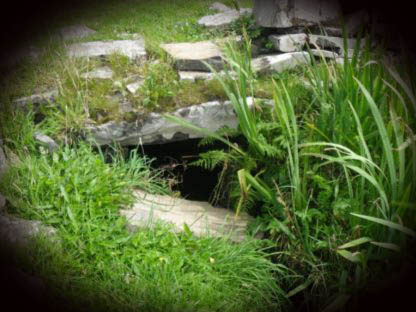|
I have named this
Imbolc workshop "Into the Cauldron", as it is a festival of
growth and rebirth, and the cauldron has long been associated with the
regenerating waters of life and rebirth.
This festival has many names, Imbolc being its old one. It is also known
as Oimelc, Oimealg, Imbolg, La Feile Bhride [Brigit's feast day], and
Candle mass. It is a festival of rebirth, purification and growth which
is why it is associated with Sacred springs and fire.
Imbolc is the festival of the first day of spring. At this festival, we
find ourselves at the midpoint of the giamos half of the year.
GODDESS AT
IMBOLC
BHRID, SIONNANN, PERSEPHONE,
YOUNG BOANN, MINNERVA,
The face of the goddess changes
throughout the course of the year, where we meet her in the guise as either
maiden, mother or crone.. We met her at Samhain, at the start of the giamos
half of the year. At this time, she was the hag of winter, the Cailleach.
Like the land around her, she too appeared barren and unfertile.
When we met her again at the Winter Solstice, she was the woman under
the hill, the deep dark earth mother, who although she is the Mother,
she has a crone like aspect. And although she has a crone like aspect,
she is full of latent fertility, as she gives birth to the sun child on
the morning of the Winter Solstice.
And now at Imbolc, we meet the goddess in her form as maiden. She is Persephone
returned from the underworld by Hades, and as a result her mother, the
earth goddess Demeter rejoices. This is why the growth returns to the
earth, the quickening begins and the flowers and plants bloom again.
The goddess in Ireland, at Imbolg, is predominately Bhrid, or saint Brigit,
as she was later known in Christian Ireland. She was such a huge personage
to the early Celts, that when the land was Christianised, it was impossible
for the Church to force the people of the land to abandon her. And so
they did what they always done when faced with such tenacity. They amalgamated
her into their religion, elevating her into a position of importance as
a primary saint. She went on to become a
saint as important to the Irish people as saint Patrick. Indeed the common
name for the festival of Imbolc nowadays is "la Feile Bride",
and is recognised as a holy day in the Catholic year.
Her sacred animal is the cow, connected no doubt to the fact that her
mother is Boann, great cow goddess of the river Boyne.
THE MAIN THEMES OF THE IMBOLC RITES
PURIFICATION:
The washing away of the old giamos energy in preparation for the return
of the samos light. At each of the eight festivals we look at the energy
prevalent at the time, whether giamos or samos. We are either in the waxing
or waning sides of one or other.
REBIRTH/RENEWAL:
The jumping through the Crios Brid. This imitates the re-birth from the
goddess' womb. Brids girdle/Crios Brid is a representation of the birth
canal, the birth canal of the goddess of the land. She is the archetype
of fertility and life.
RITUAL CHARGE OF OBJECT:
We charge our brat Brid's, our Brid's mantles with the energy of the goddess
of healing and life. This ritually charged piece of cloth can be kept
and used throughout the year for healing purposes.
IMBOLC "INTO THE CAULDRON"
ELEMENT: EARTH OF AIR.
DIRECTION: NORTH EAST
THEME: RENEWAL/ REBIRTH/ THE MAIDEN
CORE SHAMANIC PRACTICE:
**PAST LIFE JOURNEY. [GUIDED
VISUALISATION]
**JOURNEY TO LEARN SOUL TRACKING SKILLS.
OTHER WORK WE WILL BE COVERING
ON THIS FESTIVAL:
*** OGHAM COLL/HAZEL
*** COLOUR
*** PLANT
*** GOD/GODDESS
*** MYTH THAT RESONATES WITH THIS TIME OF YEAR
We will be gathering together
at "Bruideann na re Lan" for the day long workshop, and travelling
to the Shannon Pot for the ritual of the day.
All of the festivals are held
the weekend closest to their calendrical date. Exact dates will be given
closer to the festival.
COST; 80 euro. Quality vegetarian lunch included.
11.00 a.m, -------------- 7.oo p.m
|

